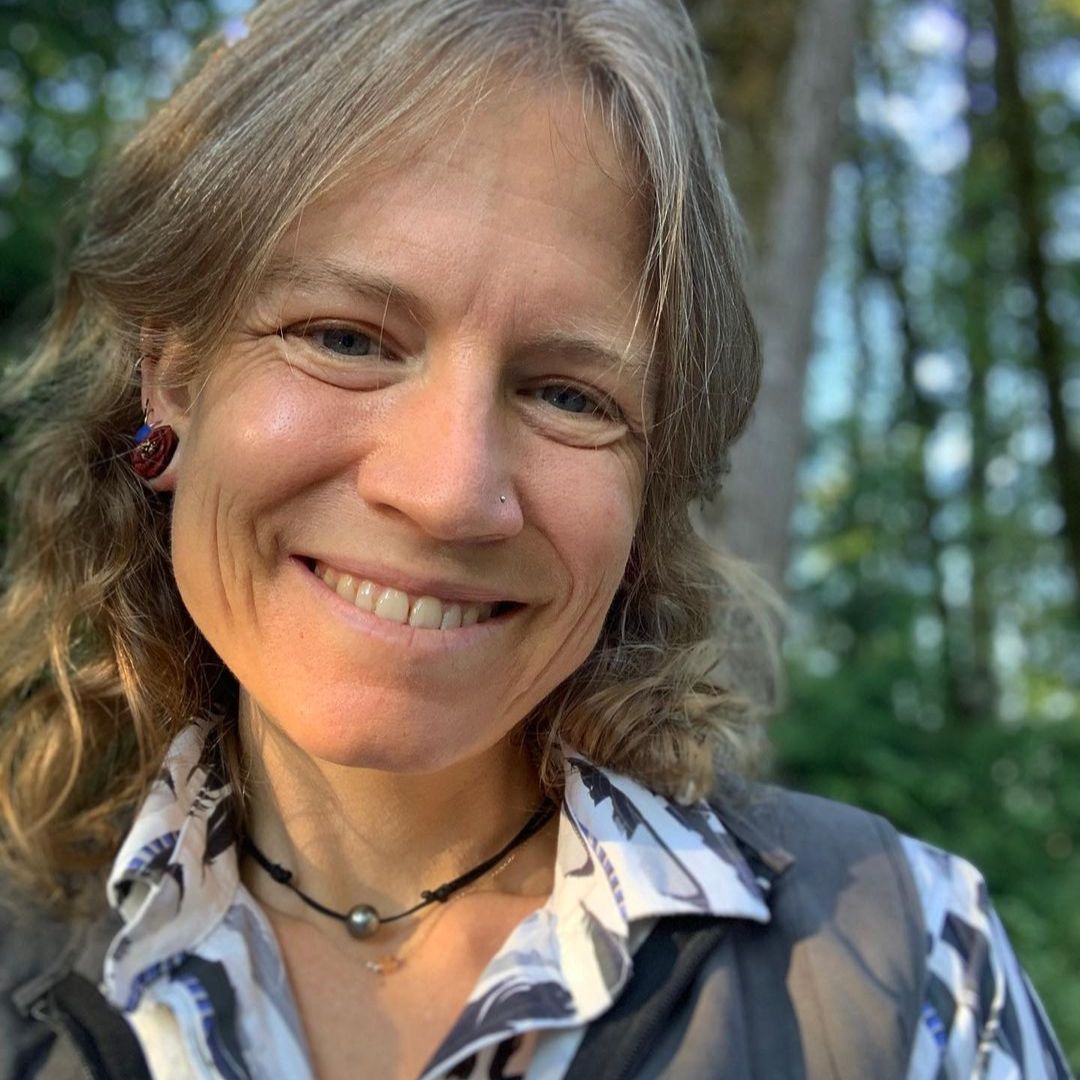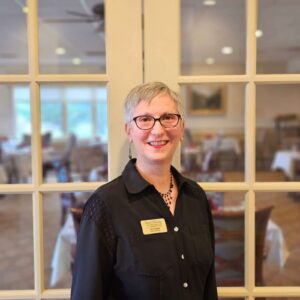The Importance of Nature for Senior Well-Being
Reconnecting with nature has long been regarded as refreshing and even healing. Now, a new study reveals potential benefits of living near nature for older adults, as well as the negative impacts of the loss of green space due to construction and development.
We are pleased to bring you this two-part series highlighting the importance of nature for senior well-being, as well as guidance for senior care communities on how to connect residents with nature through both programming and building construction.
Study Reveals How Nature Benefits Senior Health

Erin Partridge, head of inspirement at Enso Village
A new study based on health survey data gathered from 2011 to 2019 includes intriguing revelations about nature’s effect on older adults. More than 42,000 persons age 65 and older living in urban areas of Washington were surveyed, and the results were analyzed to examine any associations between the distance respondents lived from green and blue space as well as psychological distress and general health.
According to the study’s findings, participants who had more green and blue space available to them experienced lower serious psychological distress compared to participants who had less green and blue space. Researchers pose that green space is believed to reduce exposure to environmental pollutants, provide stress reduction, and encourage physical movement, which can contribute to overall improved health. Since green space can help with community building and supporting social interaction, seniors who have accessible public areas for socialization may experience less isolation and loneliness than those who don’t have such access to green space.
The researchers also suggest that the study’s findings support the idea of “nature prescriptions,” in which a healthcare prescriber recommends that patients spend a certain amount of time outside in nature. The goal of prescriptions is often to reduce chronic disease and encourage more engagement, but this study’s data indicates that a nature prescription could also support seniors’ mental health.
Erin Partridge, head of inspirement at Enso Village, is a forest therapy guide certified by the Association of Nature and Forest Therapy. Partridge explains that there are several benefits to incorporating nature into senior care communities, including the stimulation of curiosity and the hope for beauty and positivity. “Even in big changes, new growth can happen, and life will go on, which can be particularly uplifting for seniors undergoing major life changes like moving or retiring,” she says. “Nature also provides an infinite variety of stimuli, fostering curiosity and engagement amongst residents within the community. This is especially valuable in combatting feelings of hopelessness or helplessness, which are commonly experienced at this stage in life,” notes Partridge.
Strategies to Incorporate Nature into Senior Care Programming

Janice Paquette, director of recreation at one of CareOne’s independent living retirement communities
Janice Paquette, director of recreation at one of CareOne’s independent living retirement communities in Massachusetts, is a Nationally Certified Activity Professional, Activity Consultant Certified, and has additional certifications in Memory Care and Education. Paquette tries to provide opportunities for residents to pursue the same interest and interactions with nature that they had before moving to the community. “Programs may be active or passive, or a combination of both,” she says. Some programs are seasonal, some are done independently, and some are intended for a group setting.
The pet-friendly community has an in-house pet program with facility parakeets. A large parakeet cage sits in the living room, and residents can interact with the parakeets anytime. Additionally, many residents care for their own cat or dog. Since dogs require walking, all residents can interact with the dogs throughout the day, too.
The community is structured to allow residents to interact with wild birds and hummingbirds. “Residents have personal feeders and hummingbird feeders by their door, attached to their windows, or hanging from their patios,” explains Paquette. Several residents also have bird baths, and the community maintains several pollinator gardens with bird baths. “We have a bird watching program and have registered with the Merlin Bird ID app to record bird songs and add the birds we see to our Life List. Many residents have binoculars they use for bird watching, and the recreation department has extra binoculars for residents to use.”
Residents also connect with nature through gardening. In addition to communal gardening areas that residents can reserve, many residents with first-floor apartments maintain their own raised flower beds. “We offer garden tours and photographs of these gardens each year,” says Paquette. “We have a native pollinator garden planted by students from Mt. Greylock Reginal School, as well as other flowering garden areas that are highly attractive to bees, birds, butterflies, and hummingbirds. We use the PlantNet app to identify plants on our campus and to highlight their environmental benefits.”
The community has created numerous other programs to connect residents with nature:
- Through a weekly flower delivery program, residents can choose flowers for a personal vase to bring back to their apartments.
- The community holds porch talks so that residents can socialize outside, and music is piped outdoors for residents to enjoy.
- A greenhouse/hothouse is located on site, and staff and residents maintain many plants throughout the community.
- The community has a seed collection program, and has planted seeds with the local Girl Scouts.
- Al fresco dining is offered on the mountain view patio, which overlooks Mt. Greylock, the highest peak in Massachusetts. Residents can relax on the open, covered porch, and enjoy the sights and sounds of nature.
- Scheduled ice cream socials and lemonade programs are also held outdoors on the porch or patio.
- Educational programs, including nature documentaries, webinars, and workshops, are also available.
- In celebration of National Nature Photography Day, residents and staff submitted nature photos, and ribbons were provided for the photos voted as the best.
Partridge explains that Enso Village incorporates nature and sustainability in a variety of ways. “This community is surrounded by aesthetically pleasing architecture and landscapes designed to be responsive to the local climate,” she says. “The community incorporates native plants and drought-tolerant features which sets it apart from an average community.”
Additionally, the community offers forest therapy sessions. “We encourage intentional and mindful engagement with nature, promoting a sense of connection and well-being,” says Partridge. “When moving into a community like Enso Village, residents experience connections facilitated by outdoor engagement programs, such as walks and observing the beauty of nature.”
This connection can have a transformative effect on residents, and Partridge says that engaging with nature has positively impacted resident well-being and fosters a sense of presence and mindfulness. “By incorporating nature into the conversation, residents and a team member can connect with each other.”
She notes that after a recent forest therapy session, one resident shared that her favorite routine used to be walking with headphones and her phone. “But after a deliberate shift to connect with her senses, she now prefers to be unplugged and fully immersed in appreciating the nature around her,” says Partridge.
Advice for Senior Care Communities on Incorporating Nature
There are many ways to incorporate nature through programming, and some of them are quite simple. “I would encourage other senior living communities to use the talents of staff and the knowledge of their residents to provide opportunities to connect with nature,” says Paquette. “Nature-related programs can be immersive, creative, educational, multi-generational, spontaneous, long-lasting, cultural, reminiscent, and so on. The more variety, the more opportunity with endless possibilities.”
Partridge recommends that senior care communities encourage outdoor engagement programs and prioritize getting residents outside, even if they are initially reluctant. “Exposure to nature has numerous physical and mental health benefits. They may enjoy the experience more than you would think,” she says.
If residents can’t go outside, then communities can bring nature inside. “Find creative ways to bring elements of nature indoors to engage all residents’ senses, making the experience accessible to all,” Partridge says.
She suggests that communities encourage residents to be playful and engage in lighthearted programs, like skipping rocks or stomping in puddles. “Sometimes, we believe individuals are so serious and focused, we forget that they are playful and joyful as well,” she says. “Partake in different programs that bring out residents’ playfulness.”
Partridge recommends that senior care communities get started by identifying residents’ interests in animals, plants, or other elements of nature. From there, communities can work to adapt engagement programs and science projects to residents’ preferences and abilities.

Paige Cerulli is a contributing writer to i Advance Senior Care.
Related Articles
Topics: Activities , Design , Featured Articles , Housing , Resident Care , Senior Environments











